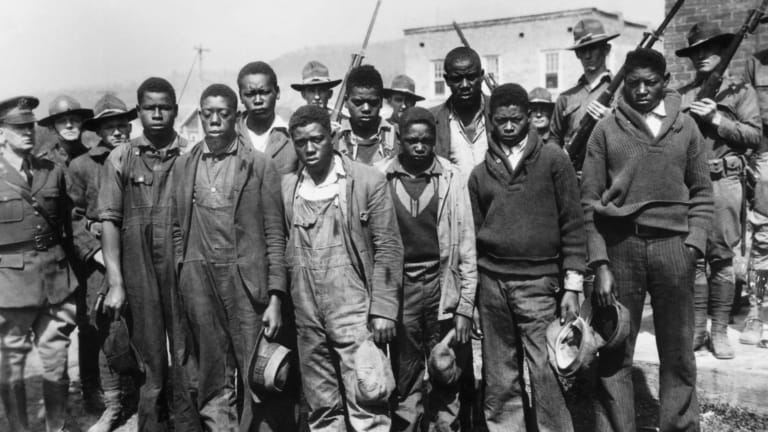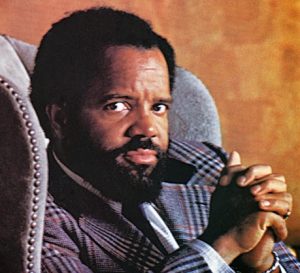April 7, 1931. Thousands of people gathered in the small town of Scottsboro, Alabama. A brass band entertained them with the song “There’ll be a Hot Time in the Old Town Tonight.”1 The verdict of nineteen-year-old Clarence Norris was read, convicting him of a crime he did not commit, and sentencing him to death. Clarence was the son of a former slave. At the young age of seven, he was put to work in the fields and went to school minimally. After his father died, he began working for wages, and he took a trip on the Southern Railroad to look for work. However, all it took was this train ride to change his whole life. And most importantly, all it took was this specific train ride to change history. Clarence Norris, an African-American teenager, was aboard that train, moving from town to town looking for a better life and a better opportunity. But what happened on that train ended all of those hopes. What began as a fight between a group of African-American teenagers and white teenagers would land Norris and the eight other “Scottsboro Boys” in jail with a minor charge. However, when two white females who were aboard the train told a different story, not only would the teenagers’ reputations be in danger, but their lives as well.
On the morning of March 25, 1931, nine African-American male teenagers were pulled off the train by the sheriff’s posse in response to a complaint about a fight on the train. Victoria Price, twenty-one, and Ruby Bates, eighteen, were also on the train hoboing, wandering aimlessly from one place to another looking for work. When questioned by the sheriff’s posse, the young ladies changed the lives of these nine young men when they accuse them of rape. By that evening, the local newspaper, Jackson County Sentinel, spread the word of this “revolting crime.”2
1931, ordinary general and department stores, houses, and schools were found on every corner. However, there was something far more sinister waiting around the corner. Groups of white individuals would gather together to form mobs to demand a lynching.3 This was what awaited the nine boys when they arrived at Scottsboro, only to be convicted of a crime they had not committed. By March 30, 1931, five days after being arrested for a minor charge, the Scottsboro Boys were all indicted by a grand jury. Then April 7 came. Distraught and alone, Clarence Norris found himself in a jail cell with a lynch mob forming outside the jail. The National Guard was brought in, in order to protect the Scottsboro Boys. Up to 10,000 spectators gathered as they brought Norris to trial, with armed soldiers on hand to keep the growing mob at bay. Bates had testified that she was beaten and bruised by the repeated rapes and that she lost consciousness, regaining consciousness only when she found herself on the way to the Scottsboro jail. However, multiple witnesses and officers reported seeing her fully conscious when she, and the boys, were taken off the train. R.R. Bridges, the physician who examined the two girls, testified that they showed evidence of recent sexual activity, but not recent enough to match the time of the alleged rapes, and they showed no evidence of bruising or violent treatment. The verdict was read and Clarence’s fate was in the hands of an all-white jury. The defense team provided to Clarence was Tennessee attorney Stephen R. Roddy, an alcoholic, who was not familiar with Alabama law, and Milo Moody, a 69-year-old lawyer who hadn’t practiced in years. 4 Despite the contrary evidence, in less than two hours, with the testimonies of Price and Bates, and the lack of proper representation, nineteen-year-old Clarence was sentenced to death. Surrounded by strangers, charged by men and a system built against his people, Clarence Norris began his forty-five-year long hardship, not only fighting for his rights, but also for his life.
“I was scared before, but it wasn’t nothing to how I felt now. I knew if a white woman accused a black man of rape, he was as good as dead… All I could think was that I was going to die for something I had not done.” – Clarence Norris 5

Anger and dismay began to sweep the nation and around the world over the racially motivated arrests and prosecution of the boys. In May of that year, hundreds of thousands of supporters gathered to protest the convictions and demanded the freedom of the young Scottsboro Boys.6 Astonished by the age of the defendants, the length of their trials, and sentences received, the National Association for the Advancement of Colored People (NAACP) as well as the International Labor Defense (ILD) reached out and provided support for the young men and their families. The organizations even raised money for appeals. However, the NAACP withdrew from the case due to the nature of the crime. 7

The following year, the Alabama Supreme Court kept all of the Scottsboro Boys convictions and death sentences except for the second youngest, Eugene Williams. In November, however, the U.S. Supreme Court ruled in Powell v. Alabama that Alabama had denied the defendants acceptable felony illustration or due manner guaranteed by the Fourteenth Amendment.8
During this time, Clarence spent the majority of his time on death row, haunted by the executions he could hear from his cell, and dreamt of his death. Norris was only nineteen years old and was forced to hear people being put to death. He lived knowing that the death penalty was the sentence handed to him, that eventually, his turn was going to come to be in that chair, for something that he never did. Norris was retried again in 1933, only to be sentenced to death yet again. However, this time his appeal was sent to the United States Supreme Court. In the trial, the court ruled that the absence of black jurors was a violation of the Fourteenth Amendment’s equal protection clause and called for a retrial.9 While awaiting a new trial, Norris felt alone and there was no one to talk to or anyone to listen to his story. Norris was tried and convicted a third time in 1937. Norris spent fifteen years in prison. Twice his head was shaved in preparation for his execution.
“I am alone, out to myself. No one to say a Kind word to Me just listens to the other people away from me.” – Clarence Norris
However, what the world didn’t expect was for the rape charges against Olen Montgomery, Willie Roberson, Eugene Williams, and Roy Wright to be dropped.10 As these Scottsboro Boys were released, Norris suspected that the State changed the story to get the four boys free, sacrificing his chance at freedom. The next year, his death sentence was commuted to life in prison. While working in a prison mill, Norris would lose a finger, be abused by guards, and spent long periods in solitary confinement. A once young man was now raised into the prison system, facing hardships for something he never did. Clarence Norris was losing hope.

In 1944 Clarence Norris stepped outside jail for the first time since 1931 when he was paroled.11 After prison, he was made to work in a sawmill by his parole officer. However, Norris had enough and it was time to leave, and he violated the conditions of his parole by leaving Alabama. At the time, Attorney Chalmers was still attempting to negotiate for the release of Powell and Patterson; his parole violations made this task monumentally more difficult. Eventually, Chalmers persuaded Norris to return to Alabama where he was taken into custody for another two years. Once paroled again, Norris violated his conditions by fleeing to New York, vowing to remain a fugitive, never to return.
Taking up his brother’s identity Norris found work on his own or with the help of friends like his defense lawyer, Samuel Leibowitz, and the NAACP. By the 1960s, he was living with a third wife and their children in Brooklyn, New York. Still, in violation of his parole, Norris always feared the effect of his past on his children. Norris contacted the NAACP to help him arrange a pardon. The NAACP launched a public campaign in the fall of 1976, which resulted in Governor George Wallace granting Norris a full pardon, officially freeing him at last, 45 years after his initial arrest.12 Norris died in 1989 at the age of 76, after publishing an autobiography, The Last of the Scottsboro Boys; he was the last surviving member of the original nine. It took eighty-two years for the State of Alabama to posthumously pardon the other Scottsboro Boys: Powell, Andy Wright, and Patterson in 2013.
Today, everyone who was a part of the trial is gone, but still, the story of the Scottsboro Boy lives on in sons, daughters, grandsons, and neighbors. The convictions of nine innocent teenagers have haunted the nation. It’s been 88 years since the Scottsboro Boys were first convicted of rape and sentenced to death, and most of the lives of the Scottsboro Boys have been lost in the light of this American tragedy. However, the effects of their cases have left an everlasting effect on today’s world and have helped provide the strength to bring justice in a time when people have become divided once more.13
“The lesson to black people, to my children, to everybody, is that you should always fight for your rights, even if it cost you your life. Stand up for your rights, even if it kills you. That’s all that life consists of.” – Clarence Norris
- Encyclopedia of Race and Racism, 2013, s.v. “Scottsboro Boys” by Margaret Burnham. ↵
- James Goodman, Stories of Scottsboro (New York: Pantheon Books, 1994), 11-12, Google Scholar. ↵
- James A. Miller, Susan D. Pennybacker, and Eve Rosenhaft, “Mother Ada Wright and the International Campaign to Free the Scottsboro Boys, 1931-1934,” The American Historical Review 106, no. 2 (2001): 390-391. ↵
- Hugh T. Murray, “The NAACP versus the Communist Party: The Scottsboro Rape Cases, 1931-1932,” Phylon (1960-), no. 3 (1967): 276-277. ↵
- James E. Goodman, Stories of Scottsboro (New York: Vintage Books, 1995), 5. ↵
- Hugh T. Murray, “The NAACP versus the Communist Party: The Scottsboro Rape Cases, 1931-1932,” Phylon (1960-), no. 3 (1967): 278. ↵
- James A. Miller, Susan D. Pennybacker, and Eve Rosenhaft, “Mother Ada Wright and the International Campaign to Free the Scottsboro Boys, 1931-1934,” The American Historical Review 106, no. 2 (2001): 390-391. ↵
- Encyclopedia of Race and Racism, 2013, s.v. “Scottsboro Boys,” by Margaret Burnham. ↵
- Norris v. Alabama, 294 U.S. 587 (1935). ↵
- Encyclopedia of the Supreme Court of the United States, 2008, s.v. “Scottsboro Boys” by William Bush. ↵
- James A. Miller, Susan D. Pennybacker, and Eve Rosenhaft, “Mother Ada Wright and the International Campaign to Free the Scottsboro Boys, 1931-1934,” The American Historical Review 106, no. 2 (2001): 392. ↵
- Encyclopedia of the Supreme Court of the United States, 2008, s.v. “Scottsboro Boys” by William Bush. ↵
- Encyclopedia of the Supreme Court of the United States, 2008, s.v. “Scottsboro Boys” by William Bush. ↵



75 comments
Alexandra Ballard
The fact that this man died in 1989 and was the son of a former slave feels so strange to me. Slavery feels so far away in the past but it really wasn’t. I was so happy to read he was granted a full pardon. His determination to be free from his convictions is so inspiring! I always wonder how many people are wrongfully convicted of crimes just because of a prejudice towards them. This was such a well-written article and I really appreciate the attention brought to Clarence Norris!
Vanessa Rodriguez
Reading this, I had an idea of who the Scottsboro boys, but not the in depth details. I thought it was so crazy how they got sentenced for rape but none of it was true. The fact that most people just went along with the lynching and deaths of black people is so unfair and wrong. I really enjoyed how the story ended in a somewhat happy ending, but I am so much more interested in this story and I am glad you brought it to light. Amazing article.
Danielle Rangel
This was a well written and riveting article to read! I think it is impactful to understand how the accusations of a certain person can change lives like the Scottsboro Boys. This article demonstrates the suspense and significance of this case in this point in history. Although there were many racist people who were willing to sacrifice the boy’s lives, it is interesting to see how there were people willing to stand up for their rights regardless of the accusations and their social status. Overall this was a very well written and compelling article.
Rosalyn Ledesma
Truly such a tragic story, those boys were so young with so much life ahead of them. And for Norris to be sentenced to death at nineteen– it blows my mind that such hateful mob mentality once had that much power that they could sentence people to jail with no evidence that proves they committed the crime. As for the article, I really liked that you added in quotes from Norris. I think it made the article feel more personal, like Norris was telling hsi story to us himself.
Victoria Castillo
Great article Kathryn! The introduction was also well done, especially when it gave off a sense of foreboding for the “Scottsboro Boys”. While I have heard of the Scottsboro Boys and their situation as a whole, I didn’t know of the more personal details of their dilemma or who Clarence Norris was. Learning that Norris’s whole case was doomed from the start no by having any incriminating evidence against him, but by the defense team given to him and the jury was both surprising, yet not. It was sad to hear that Norris had to experience all of this hardship and cruelty from others just because of the skin of his color, especially when he was just a teenager who was looking for work at the time of the accusations.
Iris Reyna
Good job on the article, it did a good job at telling the story of Clarence Norris and the tragic life he had to endure. It was a truly good article to read but sad at the same time to see how he suffered at the hands of a rigged system and was accused twice for something he didn’t do. He faced so many hardships all of the Scottsboro boys did. Events like this were not the only ones happening, reading this article reminded me of Emmit Till, another boy who faced the same accusation as Clarence Norris. They suffered because of white women’s words. It’s devastating and horrible. They all deserve justice.
Gabriella Galdeano
This article was very well written. The first sentence caught my attention. I also liked how quotes from Clarence Norris were used. The injustice that the nine Scottsboro Boys is horrifying. I don’t understand what the girls could have gained from falsely claiming they were raped. It shows how malicious people were towards African Americans during that time. Racism today is not as bad, but it is still very much present.
Hunter Stiles
Congratulations on the publication of your article! The fact that Clarence noris was only 19 baffles me. He was executed when he was my age. And he wasn’t supposed to be! It was blatantly false. Even though the girl was testifying against them, the jury nevertheless found them guilty. The way the American judicial system was used was repulsive. I find it hard to accept that twice before his execution, his head was shaved. The fear of repeatedly being prepared for death is unfathomable. Extremely well written!
Guiliana Devora
I have read and heard about the Scottsboro boys before and every time it always makes me so sad to think about what happened to them. I think the author did an amazing job on telling the story of Clarence Norris and what exactly happened in that case. When the author explained that the evidence showed no injuries or bruising on the girls or signs of recent sexual activity to match the dates, but the boys were still convicted, I will never understand why the original jury thought that these boys actually did it.
Nnamdi Onwuzurike
Imagine being in Clarence Norris’ shoes. If it were me I’d be terrified and furious. There were doctors and witnesses that testified against the accusers but for some reason Clarence was still found guilty. Then racism was rampant and is still around till date. I just do not understand why people fail to see everyone as a human. Anyways this was a very informative read.